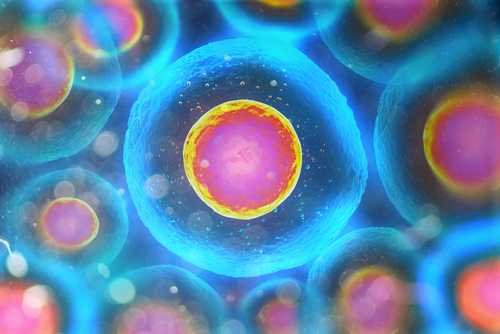Lung Stem Cells Close to Treating IPF, Other Lung Fibrosis Diseases, Say N.C. Researchers

Researchers at two universities in North Carolina have developed a new method to expand stem cells isolated from patient’s lung biopsies.
A team led by Dr. Jason Lobo, assistant professor of medicine at the University of North Carolina (UNC), and by Ke Cheng, associate professor in the Department of Molecular Biomedical Sciences at North Carolina State University (NCSU), previously found that lung stem cells could potentially treat mice with idiopathic pulmonary fibrosis (IPF).
With their new cell expansion method, stem cell therapy for fibrotic lung patients comes closer to reality, finds their study, “Derivation of therapeutic lung spheroid cells from minimally invasive transbronchial pulmonary biopsies,” in the journal Respiratory Research.
The researchers and their teams are now talking to officials at the U.S. Food and Drug Administration (FDA). They plan an initial clinical trial to test the therapeutic potential of this approach among a small group of IPF patients.
“This is the first time anyone has generated potentially therapeutic lung stem cells from minimally invasive biopsy specimens,” Lobo said in a news release.
Despite extensive research, only Esbriet (pirfenidone) and Ofev (nintedanib) have won FDA approval to treat IPF. Yet they only relieve IPF’s symptoms; they do not solve the underlying cause of the disease itself. Researchers have been studying stem cells as one possible therapy.
Cheng and Lobo have been studying a particular subset of stem cells called lung spheroid cells, which apparently have regenerative properties, as well as anti-fibrosis and anti-inflammatory effects, in animal models of IPF. Such cells also have a better therapeutic response than mesenchymal stem cells, which have been the focus of potential fibrosis treatment in several studies.
The UNC/NCSU team says that through a relatively non-invasive procedure called a transbronchial biopsy, it is possible to obtain these lung spheroid cells from patients with lung diseases.
“We snip tiny, seed-sized samples of airway tissue using a bronchoscope,” Lobo said. “This method involves far less risk to the patient than does a standard, chest-penetrating surgical biopsy of lung tissue.”
By culturing these cells in the lab using a three-dimensional method they created, the team was able to expand the cells into an amount sufficient for treatment. When tested in mice, these human stem cells would accumulate in the animals’ lungs.
“These cells are from the lung, and so in a sense they’re happiest, so to speak, living and working in the lung,” said Cheng.
Added Lobo: “The treatment was safe and effective whether the lung spheroid cells were derived from the recipients’ own lungs or from the lungs of an unrelated strain of rats. In other words, even if the donated stem cells were ‘foreign,’ they did not provoke a harmful immune reaction in the recipient animals, as transplanted tissue normally does.”
Lobo and Chen hope that in the long run, their lung stem cell therapy can be widely used to treat patients with fibrotic diseases, either by collecting lung spheroid stem cells from the patient or from a healthy donor.
“Our vision is that we will eventually set up a universal cell donor bank,” Cheng said.






